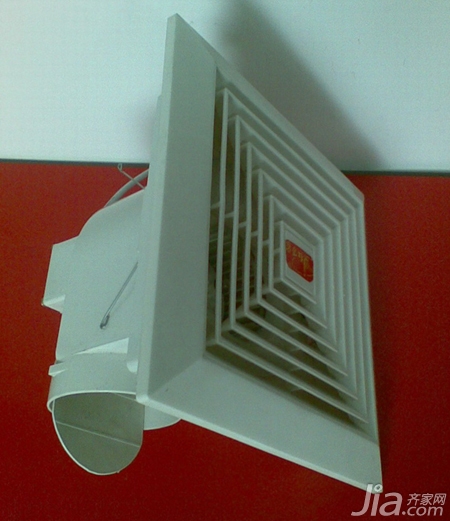Ventilating Fan Encyclopedia: basic parameters of ventilation fan

Exhaust Fan Encyclopedia: Key Parameters of Ventilation Fans
1. Airflow: This refers to the amount of air that a ventilation fan can move or supply within a specific time frame. In technical terms, it's also known as "air flow." The airflow of a ventilation fan is defined as the volume of air delivered by the impeller per unit time when the static pressure is zero, under rated voltage and frequency conditions. It is commonly measured in cubic meters per hour (m³/h) or cubic meters per minute (m³/min).
2. Power: The power consumption of a ventilation fan is determined by measuring the input power of its motor. This measurement is typically taken simultaneously with the airflow assessment. The unit used for this is Watts (W). Understanding the power rating helps users evaluate energy efficiency and performance.
3. Pressure: This is the difference in air pressure between the inlet and outlet of the fan. The pressure rating of a ventilation fan indicates the maximum pressure it can generate when no air is being moved, at the rated voltage and frequency. It is measured in Pascals (Pa). This parameter is crucial for determining the fan’s ability to overcome resistance in duct systems.
4. Noise: The noise produced by a ventilation fan includes electromagnetic, mechanical, and aerodynamic sounds. Aerodynamic noise comes from the rotation of the blades and the turbulence of the air, often measured in decibels (dB). To measure noise levels, a sound level meter is used—a device that consists of a microphone, amplifier, and other components to accurately assess sound intensity. Prolonged exposure to high noise levels can affect human health, which is why regulations set limits on acceptable noise levels in different environments.
According to China's Environmental Noise Pollution Prevention and Control Law, residential areas should have noise levels not exceeding 55 dB during the day and 45 dB at night. In mixed-use zones, the limit is 60 dB during the day and 50 dB at night. Therefore, office environments must ensure noise stays below these thresholds to maintain a comfortable working atmosphere.
5. Performance Curve: When a ventilation fan operates under rated voltage and frequency, its main performance parameters—such as airflow, pressure, and power—are often represented graphically. This is known as the performance curve or characteristic curve. It typically shows the range from free exhaust (no airflow) to full load (maximum airflow), helping engineers and users select the right fan for their needs.
Key Knowledge:
Ventilation Fan Wikipedia: What Is a Ventilation Fan?
Ventilation Fan Encyclopedia: Types and Applications of Ventilation Fans
Ventilation Fan Encyclopedia: Where Are Intelligent Ventilation Fans Used?
Promotional Information:
Ceiling Mall Top 5: Integrated Ceiling Ventilation Series
Gree Ultra-quiet Powerful Ventilation Fan Special: 188 yuan / piece
NOYOK NH30-03 Kitchen Exhaust Fan: 154 yuan / piece
Xinfei Integrated Ceiling Liuye Ventilation Fan Special: 128 yuan / piece
NOYOK Integrated Ceiling Ventilation Fan Special Price: 128 yuan / piece
Gree Ultra-quiet Aluminum Frame Ventilation Fan Special: 188 yuan / piece
Ventilation fan, integrated ceiling, electrical, kitchen ceiling
Chloride Free Mgo Panel For Wall Partition
Chloride Free Mgo Panel For Wall Partition,Chloride Free Pads
Shangdong Oushibao New Materials Co.,Ltd , https://www.oushibaomgo.com